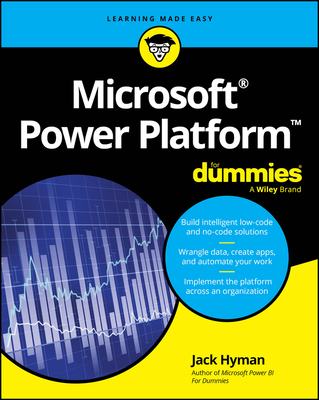Fast Track to Spring 3 and Spring MVC / Web Flow Training in Santa Clara
|
We offer private customized training for groups of 3 or more attendees.
|
||
Course Description |
||
| Spring is a lightweight Java framework for building enterprise
applications. Its Core module allows you to manage the lifecycle of
your objects and the dependencies between them via configuration
metadata (either XML or annotations) and Dependency Injection /
Inversion of Control. Its advanced capabilities provide support for
JDBC and persistence frameworks like Hibernate (DAO and ORM modules),
Aspect-Oriented Programming (AOP module), integration with Java Web
technologies (MVC and Web Flow), security, transactions, and more. This
course is a new course based on the Spring 3 release. It includes
complete coverage of the annotation based approach to configuration and
the use of Java-5 capabilities that was first introduced in Spring 2.x,
and which has been greatly enhanced in Spring 3. It also provides
coverage of the traditional XML-based configuration that can still play
an important role in existing and new projects. The course starts with
the basics of Spring and in-depth coverage on using the powerful
capabilities of the Core module to reduce coupling, and increase the
flexibility, ease of maintenance, and testing of your applications. It
goes on to cover all the important capabilities of Spring 3, including
using Spring to simplify the creation of a persistence layer with JDBC
and/or persistence frameworks like Hibernate and JPA. It includes
coverage of advanced capabilities such as using Spring's Aspect Oriented
Programming (AOP) to program cross-cutting concerns such as transactions
and security. This includes an introduction to Spring Security v3, its
architecture, and how to use it to secure both Web application requests
and bean invocations The course includes integration of Spring with
Java EE Web applications, an introduction to Spring's Web MVC, and
thorough coverage of Spring Web Flow 2 (which is still the latest
version available). Spring MVC is a Web framework based on the powerful
Model-View-Controller pattern, and the introduction covers the basics of
Spring MVC, and how it supports organizing your Web applications in a
highly structured, loosely coupled manner. Spring Web Flow 2 is a Spring
framework for defining user interface flow in a Web application. The
course includes thorough coverage of Web Flow, including an overview of
its capabilities and architecture, defining flows, flow variables and
actions, the Unified EL, and flow programming. Note that Spring Web Flow
3, which will use annotation-based configuration, is still in a very
early development stage.
Course Length: 5 Days
Course Tuition: $2250 (US) |
||
Prerequisites |
|
| A good working knowledge of basic Java. | |
Course Outline |
|
Session 1:
Introduction
Overview of Spring Technology
Shortcomings of Java EE, Spring Architecture
Spring Introduction
Managing Beans, The Spring Container, IoC, DI
Configuration Metadata - XML, @Component, Auto-Detecting Beans
Dependencies and Dependency Injection (DI)
Dependency Inversion, Dependency Injection (DI) in Spring, DI Configuration - XML, @Resource
Session 2:
More about Bean Properties
Working with Properties
Configuring Value Properties, Property Conversions, Setter / Constructor Injection
Spring Expression Language for Configuration
Collection Valued Properties
Configuring and using lists, sets, etc.
Additional Capabilities
Factory Methods, Bean Aliases, Definition Inheritance (Parent Beans)
Session 3:
The Spring Container and API
ApplicationContext
ClassPathXmlApplicationContext, FileSystemXmlApplicationContext, Constructors, Usage
Resource Access - Overview, Resource Implementations
Validation
Overview, JSR-303
Declarative Validation, @NotNull, @Size, @Min, etc
Configuration, Injection
Bean Scope and Lifecycle
Bean Scope Defined, Configuring, Inner Beans, Bean Creation Lifecycle, Lifecycle Callbacks, BeanPostProcessor, Event Handling
MessageSources
Defining and Using Resource Bundles, Localization/I18N
Annotation Driven Configuration
Stereotypes: @Component, @Service, @Controller, @Repository
Java EE 5 Annotation Support
Defining Custom Annotations
Autowiring
@Autowired on setters, constructures, methods, fields
Injecting resources like ApplicationContext
Fine tuning with @Qualifier
Java Based Bean Metadata (JavaConfig)
Overview - code-centric Configuration
@Confguration, @Bean, and @Value
Importing and @Import
Autowiring in Configuration Classes
Mixing XML Configuraiton and @Configuration
XML vs Annotation Based Configuration
Other Capabilities
SpEL - Spring Expression LanguageValidation
Session 4: Database Access with Spring
Issues with JDBC / Typical JDBC Flow
Introduction to Spring DAO Support
Spring Database API, (Simple)JdbcTemplate, (Simple)JdbcDaoSupport, DataSources,
Working With and Configuring, <list>, <set>, With Bean Refs, <map>, <props>
Queries and Inserts
RowMapper, ParameterizedRowMapper, Passing Arguments, queryForObject, query, update
Additional API Capabilities
Additional query methods, Passing Type Arguments, queryForList, FetchSize, MaxRows
Using Spring with Hibernate
Overview of Template Approach, SessionFactory configuration
Using Contextual Sessions
Using Spring with JPA
LocalEntityManagerFactoryBean, LocalContainerEntityManagerFactoryBean, JNDI, PersistenceUnitManager
DAO Support - @PersistenceUnit, @PersistenceContext
Session 5:
Aspect Oriented Programming (AOP)
Overview of AOP
AOP Basics, Aspect, Joinpoint, Advice, Pointcut
Introduction to Spring AOP
Capabilities, Configuration (Annotation Based and XML), Weaving, Joinpoints
Using Aspects
Defining Advice, Configuring Pointcuts, Targets and Proxies
XML Configuration with <aop:>
AspectJ Pointcuts, Autoproxies
Using @AspectJ Annotations
@AspectJ Annotations, Declaring Advice
Session 6:
Spring Transaction (TX) Management
Intro to Spring Transaction Management
Overview, Component TX Model, TX Propagation, Declarative Transactions, TransactionManagers
Using Spring Transactions
Annotation Configured Transactions
@Transactional and its settings
XML Configured Transactions
new <tx:*> elements, Configuring tx:advice, and tx:attributes
Defining the TX advisor
Session 7:
Introduction to Spring Web Integration and Spring MVC
Integrating Spring with Java EE Web Apps, ContextLoaderListener, WebApplicationContext
Spring Web MVC Overview, Capabilities, Architecture
Spring MVC Basics
DispatcherServlet, Configuration, mvc Namespace
Controllers, @Controller, Handler Methods
@RequestParam and Parameter Binding
View Resolvers
Writing Controllers, @Controller, @RequestMapping, @RequestParam, @PathVariable
Forms and Binding, Spring Form Tags, @ModelAttribute
Session Attributes, @SessionAttributes
Session 8:
Overview of Spring Security
Overview - Capabilities, Architecture
Introduction to Spring Security
HTTP Security
Method Security
Annotation-Based Security
Expression-Based Access Control
Authentication Providers
Session 9:
Introduction to Spring Web Flow 2
Overview - Need for Flow, Capabilities, Architecture
Defining Flows
XML Flow Definition Language
Flows, States, and Transitions
Accesing Flows in Web Pages
Exiting Flows - flowRedirect and externalRedirect
Configuring Web Flow - Flow Executor, Flow Registry, Integration with Spring MVC
Working with Data - Flow Instance Variables, Flow Inputs
View Pages and Model Binding
Flow Actions - evaluate, set, and render
Session 10:
More on Spring Web Flow 2
Using the Spring Expression Language (SpEL) with Web Flow
Syntax and Expressions
Implicit Objects
Flow Control
Using Data Scopes - Request, Flash, View, Flow, Conversation, and Session Scope
POST-REDIRECT-GET Idiom
Flow Language Elements
More on States, Actions, and Other Elements
Routing with action-state and decision-state
Session 11:
Programming with Spring Web Flow 2
Creating Custom Actions
POJO Based Actions vs the Action interface
RequestContext and ExternalContext
Validation and Error Reporting
Defining Validation in the Model and in a Validator Class
ValidationContext, MessageContext, and Resource Bundles
Converters
Subflows
Defining and Using
Input/Output Variables
Conversation Scope Variables
Subflow End States |
Course Directory [training on all levels]
- .NET Classes
- Agile/Scrum Classes
- AI Classes
- Ajax Classes
- Android and iPhone Programming Classes
- Azure Classes
- Blaze Advisor Classes
- C Programming Classes
- C# Programming Classes
- C++ Programming Classes
- Cisco Classes
- Cloud Classes
- CompTIA Classes
- Crystal Reports Classes
- Data Classes
- Design Patterns Classes
- DevOps Classes
- Foundations of Web Design & Web Authoring Classes
- Git, Jira, Wicket, Gradle, Tableau Classes
- IBM Classes
- Java Programming Classes
- JBoss Administration Classes
- JUnit, TDD, CPTC, Web Penetration Classes
- Linux Unix Classes
- Machine Learning Classes
- Microsoft Classes
- Microsoft Development Classes
- Microsoft SQL Server Classes
- Microsoft Team Foundation Server Classes
- Microsoft Windows Server Classes
- Oracle, MySQL, Cassandra, Hadoop Database Classes
- Perl Programming Classes
- Python Programming Classes
- Ruby Programming Classes
- SAS Classes
- Security Classes
- SharePoint Classes
- SOA Classes
- Tcl, Awk, Bash, Shell Classes
- UML Classes
- VMWare Classes
- Web Development Classes
- Web Services Classes
- Weblogic Administration Classes
- XML Classes
- ASP.NET Core MVC (VS2022)
24 November, 2025 - 25 November, 2025 - Python for Scientists
8 December, 2025 - 12 December, 2025 - Introduction to Spring 6, Spring Boot 3, and Spring REST
15 December, 2025 - 19 December, 2025 - Fast Track to Java 17 and OO Development
8 December, 2025 - 12 December, 2025 - RHCSA EXAM PREP
17 November, 2025 - 21 November, 2025 - See our complete public course listing
Java Programming Uses & Stats
|
Difficulty
|
Popularity
|
Year Created 1995 |
|
Pros
Most Commonly Used:
Great Career Choice:
Android Apps Development:
It Can Run On Any Platform:
Great Supporting IDE's: |
Cons
Uses a Lot of Memory:
Difficulty in Learning:
Slow Start Up Times:
Verbose and Complex Code:
Commercial License Cost: |
| Java Programming Job Market |

Average Salary
|

Job Count
|

Top Job Locations
New York City |
|
Complimentary Skills to have along with Java Programming
- If you are an experienced Java developer, learning a complimentary language to Java should come much more naturally. As an example JetBrains recently created the Kotlin programming language which is officially supported by Google for mobile development. Kotlin compiles to Java bytecode and runs on the JVM; it's purported to address many of Java's shortcomings... |






